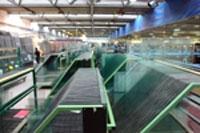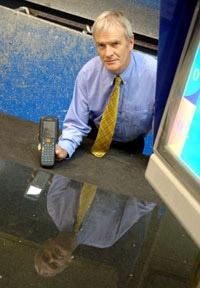Specialist glass unit manufacturer Clayton Glass boosts customer service levels through barcode track and trace solution from Barcoding.co.uk.
Building a reputation for specialist insulated glass units in today’s economy is not easy. It takes dedication to lead the market in product development and ensuring your customer service levels are second to none, which keeps your customers coming back for more. Clayton Glass in Stanley, County Durham, north-east England, is a company that fully understands the need to lead the market through innovation and service, demonstrating that it is committed to its customers and providing products of the highest possible quality.

Underpinning continuous improvement
The dominant theme of business at Clayton Glass is continuous improvement in ‘on-time-in-full orders’, superior product quality and exemplary customer service. Richard Teasdale, Financial Controller and Systems Administrator, is in charge of ICT. He points to the investments the company has made so far and indicates the way ahead as the company implements technology to enable it to achieve optimum performance in all areas of its operations. These include investments in people, manufacturing, logistics and now auto ID for accurate track and trace.
“Our warehouse contains vast numbers of products and we needed a simple way to ensure that when orders were put through to it we were able to pick the exact number of items,” says Richard Teasdale.
“We have over 120 major customers. All of our clients demand that we remain true to our word of providing ‘on-time-in-full orders’ and we do our uppermost to achieve these levels, hence, we are constantly investing in the company. We are eradicating mountains of paper records and missing units by putting increasing emphasis on barcodes. Our target is to be able to apply barcode reading throughout the business to underpin accuracy improvements across the board,” he continues.
Moreover, barcode-based traceability of products within the warehouse is just stage one out of the 10 step plan he has for taking forward the company’s IT infrastructure.
Integrating barcode
Clayton Glass is not an entire newcomer to barcode labelling as this technique has been used for many years to label its products with EAN 128 barcodes. Richard Teasdale had long identified that the company could utilise the barcodes as data carriers for an auto ID system. He investigated various options, eventually seeking assistance from Barcoding.co.uk.
“The barcode reading solution had to integrate with our specialist Lisec production software, which runs on an Oracle database. The solution would have to be cost-effective and we were looking for a tangible return on investment. The team from Barcoding.co.uk took this on board and was able to develop and implement a system that works seamlessly. It is a slick solution and our warehouse staff find it very easy to use,” says Richard Teasdale.
Barcoding.co.uk initially recommended Bluetooth scanners, but changing circumstances required the units to be upgraded to RF Datalogic Kyman scanners running over a wireless network utilising Proxim access points.
Gaining company-wide benefits
“Using barcodes helps us in many ways. First, we reduce the amount of reliance we have on paper records, second we achieve faster and 100% accurate track and trace of products within our warehouse, and third by deciding to use a wireless system we are able to make the most of the mobility that the technology brings to the warehouse. No area of the warehouse need be excluded from scanning and so we are able to locate products regardless of where they are stored,” he says.

“We are already saving in the region of £25,000 with the implementation of the wireless barcode system. We have gained speed, accuracy and real-time information, with a further benefit of comprehensive reporting,” says Richard Teasdale.
“By using barcode technology for inventory management we have opened the door to further applications for auto ID. For example, we are developing our quality control procedure. We will be able to transfer handwritten records of failed units directly into our management system simply by scanning the label. We will also be able to generate delivery notes based on the actual delivery. This tightens up traceability outside our factory gate and reduces lost unit claims and will help us to challenge such claims,” he concludes.


















